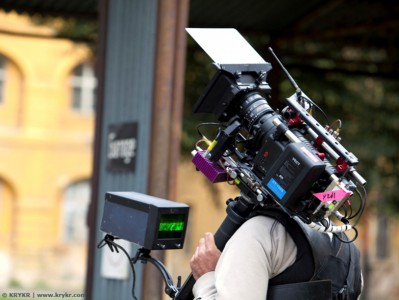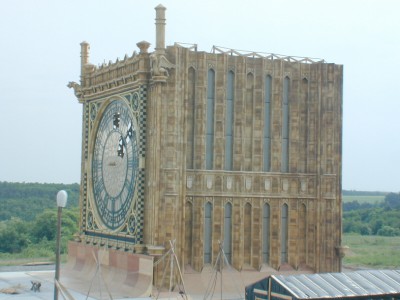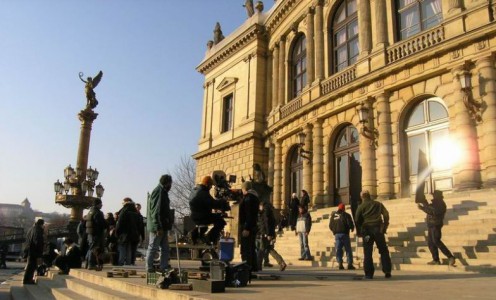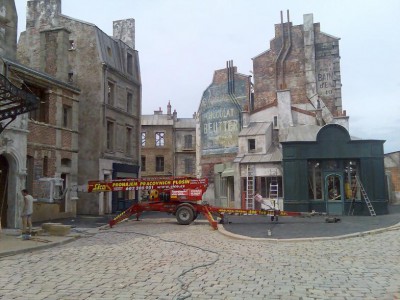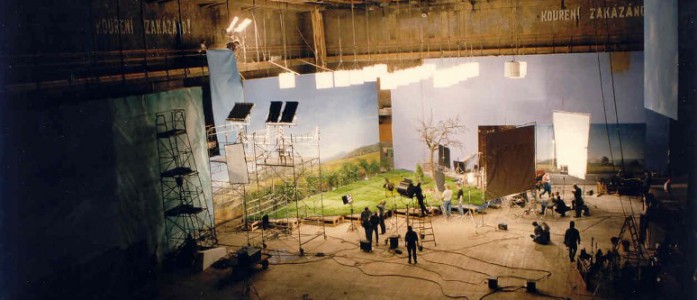Ludmila has been working with the Czech Film Commission since it was established in 2004. From the beginning it was clear that the Czech Republic needed to offer some kind of incentive to filmmakers to remain competitive.
Rebates and tax breaks in other countries were attracting the attention of producers and their accountants. “I don’t think the commission quite realised how much work an incentive would take to set up.” After several years of lobbying, the Czech Film Industry Support Programme went into effect in 2010.
What does the Czech Republic offer filmmakers?
We’re in Central Europe, bordered by Germany, Poland, Slovakia and Austria, so we have good connections to other major European cities.
The Czech Republic is about the size of Scotland and there are 10.5 million people. The countryside is a mix of rolling hills, plains, mountains and forests. We have highly-developed film infrastructure with high-end soundstages, any kind of equipment and film stock you could ask for, internationally-renowned crews and world-class post facilities. And our 20% rebate.
How does the rebate work?
It gives filmmakers a 20% rebate on their local production-related costs, so the producers have to shoot some portion of their project in the Czech Republic, of course. Practically speaking, the first thing a producer should do is find a Czech partner – this can be either a local co-producer or a Czech-based subsidiary – who acts as the applicant. Then the project needs to pass a broad test for European cultural and production criteria, such as using European locations, crews and languages.
When the project passes, the applicant submits the budget and other financial information. The project has to meet minimum spend levels – about USD760,000 for a feature. Based on these figures, the authorities determine the size of the rebate. Finally, after filming in the Czech Republic is concluded, the applicant submits audited statements showing how much they spent locally and then they receive their money within 44 days.
So is the rebate the Czech Republic’s main attraction?
Not at all. The rebate boosts the value filmmakers get in the Czech Republic and our competitiveness. It was key to bringing Mission: Impossible – Ghost Protocol to Prague in 2010. But remember that the Czech Republic hosted many other large, prestigious productions before the rebate went into effect.
Casino Royale filmed scenes here and we also hosted two films in The Chronicles of Narnia franchise. Those productions were very cost-conscious and while they knew they could probably get cheaper labour further east, they knew they could trust Czech crews and professionals to do the job right and to offer better value.
Do you work with other industries besides Hollywood?
Of course. We are extremely proud of three recent productions that came from outside America. Zentropa came to us with their first period picture, A Royal Affair, because they needed locations and professionals who had worked on period pictures before. That was a real compliment coming from the producers who created dogme.
The Borgias, a European co-production TV series, was very satisfying to work on because it was such a large production involving so many people, locations and sound stages. Our construction crews worked with Production Designer Bernd Lepel to re-create 15th Century Rome and the audience figures indicate that we pulled it off. It set a new audience record for Canal+, attracting nearly two million viewers.
We also hosted a major Bollywood production last year. Rockstar was so exciting for us because it was our first experience working with Indian filmmakers and offered us a glimpse of their industry. They came to us because they needed a location that Indian audiences would consider exotic, so we really had the opportunity to show our best side. We sincerely hope we’ll see more Indian filmmakers in the future.
What locations are most commonly used by film and TV crews when they film here
The historic centre of Prague is very popular. In addition to icons like Prague Castle and the Charles Bridge we have examples of many different architectural eras. Productions often use Prague as a stand-in for other cities – Paris, London and Vienna, to name just three – where the right historic conditions no longer exist.
In the west of the country the spa town of Karlovy Vary has an idyllic Belle Époque look which you can see in Casino Royale and Last Holiday. There are diverse castles and chateaux all over the country, and historic towns such as Český Krumlov, Kutná Hora, Žatec and many others.
What are the rare, more unusual locations?
In the north of the country is an area we call the Czech Switzerland, where you can find highly unusual natural sandstone towers and ravines. They are really out of this world, which is why the Narnia producers wanted to film them. While we’re very proud of our historic castles and pristine nature, I have to mention our industrial architecture as well. The town of Ostrava, in particular, has some truly ominous, grim-looking locations – have a look at Babylon AD and you’ll see what I mean.
What types of production do you work on most?
The feature films and TV productions are the most visible. In addition to the films I mentioned earlier, there’s also Lucasfilm’s Red Tails, which shot here and also spent several months in the Czech Republic in post-production doing work on aerial fight scenes. We actually do a lot of post-production work on films that don’t use Czech locations. One of our local post houses has worked on such films as Season of the Witch and The International, as well as miniseries like Pillars of the Earth.
Additionally there’s a steady stream of music videos and commercials. Victoria’s Secret recently shot stills and video for a new campaign here. My office doesn’t deal with commercials or music videos very often, however. They usually go their own way between advertising/publishing companies and production houses.
Are there any particular tips that you would like to share about filming in your country
Get a local production partner. They’ll help you narrow down your location list, arrange shooting permits, find crews and access the rebate. Also, be mindful of visa requirements. EU nationals, Americans and most other filmmakers don’t need visas to enter the country. There are legal requirements, however, if you plan to stay longer than 90 days or pursue gainful employment. Again, your local partner is the best person to walk you through that process. One of the roles we play at the Czech Film Commission is helping connect visiting producers with local partners.
What are the most film-crew-friendly hotels and what’s your favourite wrap party venue?
If you have A-list cast, try the Four Seasons, Kempinski, Mandarin Oriental or Marriott hotels. You can also rent exclusive flats and villas, which is what Angelina Jolie and her family did when they were here for Wanted. The Inter-Continental, Augustine and Hilton are also excellent hotels, and Andel’s has a great record of working with film crews. Prague also has more boutique and designer hotels than I can mention here. As for wrap parties, there are dozens of great clubs and bars.
What do you do with your time off and what would you recommend crew and cast do to relax?
If you’re here in winter, there is excellent skiing just a few hours from Prague in Krkonoše. In the summer you can go rafting or canoeing on one of our rivers, such as the Lužnice or Vltava. In any season, you can see Český Krumlov, which is one of our most beautiful towns. Go to Plzeň to see where Pilsner was born, to Karlovy Vary for a natural spa treatment, or combine both at one of our beer spas, where you can soak in the suds.
Thank you.

